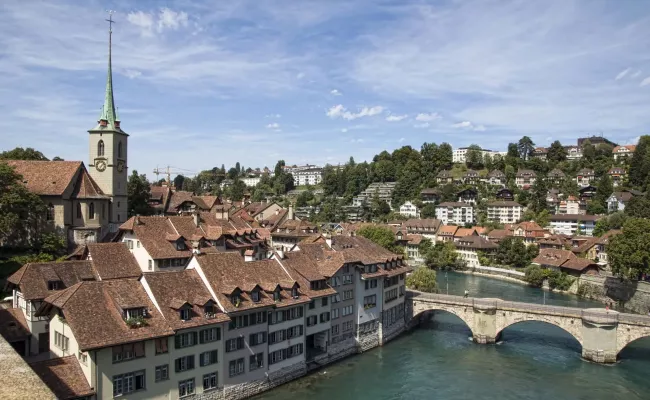Bern’s Old Town, commonly known as the medieval city center, is a UNESCO World Heritage site that perfectly captures the beauty and historical significance of Switzerland’s capital. The region is notable for its well-preserved medieval architecture, cobblestone streets, and distinct blend of ancient and modern components.
History
The city of Bern’s history begins in 1191, when Duke Berchtold V of Zähringen founded it. According to local legend, the duke pledged to name the city after the first animal he encountered while hunting, which happened to be a bear. This narrative inspired both the city’s name (Bern, which can be pronounced Bär(e)n, bears), as well as its heraldic beast.

The Zähringen Influence
The House of Zähringen ruled over much of modern-day Switzerland, establishing settlements such as Fribourg, Bern, Burgdorf, and Morat.
Strategic Location on the Aare Peninsula
Berchtold V opted for a defensible, steep peninsula with the Aare River on three sides, which had an impact on the city’s growth and development.
Growth and Development of Bern
Berchtold IV erected Castle Nydegg, a tiny fort on the peninsula’s eastern edge, in the second half of the twelfth century. Bern was founded near the eastern extremity of the peninsula, perhaps during the construction of the fort or in 1191.
In 1191, Bern’s Old City began expanding from Nydegg Castle to the Zytglogge, with three main streets at the time. The early 13th century saw the construction of Brunngasse and Herrengasse streets, along with a wooden bridge across the Aare River, thereby enhancing trade routes. Between 1255 and 1260, the city expanded again, this time fortifying Nydegg Castle and erecting the Käfigturm gate to oversee the building of four new streets. Around 1268, the city razed the castle to facilitate further urban expansion.
Bern’s fortifications saw the construction of defensive structures like the Grosse Schanze and Kleine Schanze from 1622 to 1634. These constructions were critical in protecting the city during times of instability and foreign threats, cementing Bern’s image as a strategically fortified hub in the region.

Integrity
The property includes all of the city’s historical structures, including those from the 12th to 14th centuries, as well as 19th-century developments like well-preserved bridges and big public monuments. It thereby keeps all of the necessary features to express its outstanding universal value.
Authenticity
In the early twentieth century, preservation efforts in Bern’s Old City focused on building facades and roofs, leaving most historic buildings’ interior structures intact throughout time. The medieval urban arrangement has remained unbroken, displaying a city with well-maintained buildings and dynamic contemporary urban activity.
Protection and management requirements
Since 1908, Bern’s Old City has been protected by special legislation that constantly adjusts to preserve its urban landscape while rigorously regulating modifications. This legal structure reduces development pressures and assures that no unauthorized changes occur.
Government officials at all levels actively monitor the site. Bern’s dedicated historic monuments department protects the city’s built history, while city and cantonal agencies handle broader urban issues including planning, traffic legislation, security, and natural disaster risk management.
Tourism and Community Engagement
As a thriving urban center, the site is well-equipped to welcome a large number of tourists, with two information centers and a variety of specialist services. Local residents can vote on legislative changes and important urban projects, representing their sovereign democratic rights, and non-governmental organizations (NGOs) have the right to contest administrative decisions.
Long-term Challenges and Conservation
Long-term issues include preserving the area’s original substance while retaining its character as a thriving, occupied center of work and trade. Strict supervision of the immediate boundaries, notably the slopes towards the Aar River, is also required.
